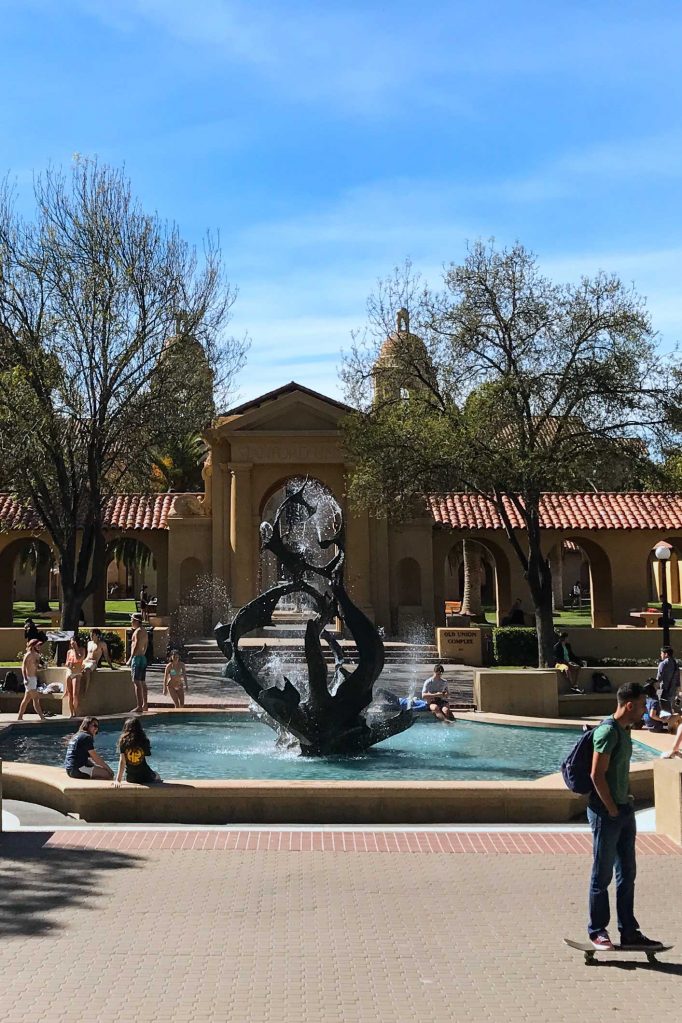Important information about Stanford University
Founded: 1885
Location: Stanford; California
Enrollment: Over 16,000
Global rank: 2
Website: www.stanford.edu
Admission/Scholarships/Financial Aid:https://www.stanford.edu/admission/
How Stanford University started
The Leland Stanford Junior University was founded in 1885 by California Senator Leland Stanford and his wife, Jane, in memory of their only child, Leland Jr., who died of typhoid fever at 15.
More information about Stanford University
Stanford covers 8,180 acres and is one of the largest university campuses in the US, with 18 interdisciplinary research institutes and seven schools:
- the Graduate School of Business;
- School of Earth, Energy & Environmental Sciences;
- Graduate School of Education;
- School of Engineering;
- School of Humanities and Sciences;
- Law School; and
- School of Medicine
The university prides itself of 19 Nobel laureates within its community, rich tradition of fostering creativity and the arts, and is oftenly ranked among the top three universities in the world.
A freshman class of about 1,700 students and a transfer class of about 30 students are admitted each year. Stanford reviews each applicant with an eye to academic excellence, intellectual vitality and personal context.
Stanford university has the following research centres:
Interdisciplinary Research– At the intersection of disciplines is where new ideas emerge and innovative research happens.
Institutes,Labs and Centres–Eighteen independent labs, centers and institutes engage faculty and students from across the university.
SLAC National accelerator-SLAC is a U.S. Department of Energy national laboratory operated by Stanford, conducting research in chemistry, materials and energy sciences, bioscience, fusion energy science, high-energy physics, cosmology and other fields.
Hoover Institution-The Hoover Institution, devoted to the study of domestic and international affairs, was founded in 1919 by Herbert Hoover, a member of Stanford’s pioneer class of 1895 and the 31st U.S. president.
Stanford woods Institute of the Environment-Working toward a future in which societies meet people’s needs for water, food and health while protecting and nurturing the planet.
Stanford Humanities-Advancing research into the historical, philosophical, literary, artistic, and cultural dimensions of the human experience.
Stanford Bio-X– Biomedical and life science researchers, clinicians, engineers, physicists and computational scientists come together to unlock the secrets of the human body.
Freeman Spogli Institute for International studies (FSI)-Understanding problems, policies and processes that cross borders and affect lives around the world.


